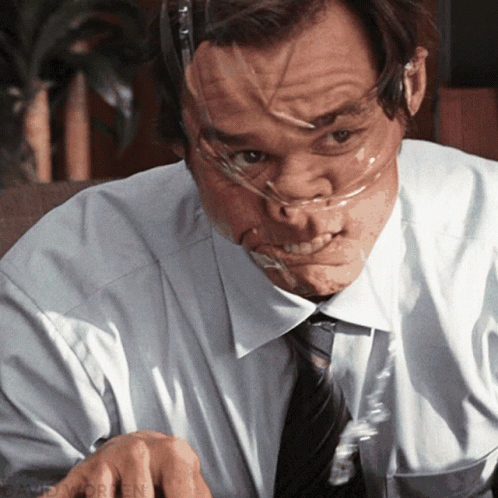😴 Taping Your Mouth Shut? The Science Behind Mouth Taping and Better Sleep

Health & Sciences | The Varrock Street Journal
Rise and shine readers! We hope you are all plenty rested for today's read.
You may have heard about it on social media or seen someone post a selfie with tape over their lips—no, it’s not a prank. It’s called mouth taping, and it's one of the latest wellness trends aimed at improving sleep quality, snoring, and even oral health.
But is there any science behind it? Or is this just another wellness fad gone viral? Today, we’re diving into what research says about breathing through your nose at night, how mouth taping works, and what you should know before giving it a try.

What Is Mouth Taping?
Mouth taping is the practice of placing a small piece of breathable tape over the lips before going to bed to encourage nasal breathing instead of mouth breathing during sleep.
The idea is based on the premise that nasal breathing is more efficient, protective, and oxygenating than breathing through the mouth—especially during rest.
🧪 What Does the Science Say?
While large-scale studies are limited, growing evidence supports the potential benefits of promoting nasal breathing during sleep:
🔹 Improved Sleep Quality
- Mouth breathing is often associated with fragmented sleep, dry mouth, and snoring.
- Small clinical studies have shown that people who switch to nasal breathing experience fewer nighttime awakenings and longer stretches of deep sleep.
🔹 Reduced Snoring and Mild Sleep Apnea
- In a 2022 study published in Otolaryngology–Head and Neck Surgery, participants with mild sleep apnea who used mouth tape snored less and had lower apnea-hypopnea index (AHI) scores.
- Nasal breathing creates better airflow dynamics and reduces the vibration of soft tissues in the throat.
🔹 Better Oxygenation and CO₂ Balance
- Nasal breathing supports the body’s ability to maintain optimal blood gases, which contributes to more restful sleep and fewer night-time disruptions.
🔹 Oral Health Benefits
- Mouth breathing during sleep can cause dry mouth, which increases the risk of cavities, gum disease, and bad breath.
- Nasal breathing helps keep saliva flowing and maintains a more balanced oral microbiome.
Here is a podcast episode discussing this topic and a reflection on how it has impacted one persons life.
🛑 Risks and Considerations
Mouth taping isn’t for everyone. You should avoid mouth taping or consult a healthcare provider first if you:
- Have moderate or severe obstructive sleep apnea (OSA)
- Experience nasal congestion or structural nasal issues
- Have anxiety or claustrophobia triggered by restricted breathing
- Are a child or have specific medical conditions requiring close monitoring during sleep
Additionally, mouth taping should always use gentle, skin-safe tape designed for this purpose—not household duct tape or anything that could obstruct breathing.

🧠 Why This Matters
Our bodies were designed to breathe through the nose. It filters air, humidifies it, and even produces nitric oxide, a molecule that supports blood flow and immune defense. Encouraging nasal breathing may help restore natural sleep rhythms and promote long-term health.
Mouth taping may not be for everyone, but it shines a light on something crucial: how we breathe affects how we sleep.
🌟 Spotlight on the Future
- Wearable sleep tech is starting to include breathing pattern analytics, helping track the effects of nasal vs. mouth breathing.
- Nasal dilators and breathing trainers are being used alongside mouth taping for a more complete approach.
- Some sleep specialists are using mouth taping as a bridge therapy for patients who can't tolerate CPAP but need apnea management.
😲 Did You Know?
- Humans are one of the few mammals that habitually mouth-breathe—most animals only do it under extreme stress.
- Chronic mouth breathing can lead to facial structure changes in children if not addressed early.
- The nose has nasal cycle rhythms, alternating airflow between nostrils every few hours!
🧠 Reflection Questions
- Do you breathe through your mouth or nose at night—and how might that affect your sleep quality?
- What small changes could encourage more nasal breathing throughout the day?
- Is mouth taping something you’d feel comfortable trying—or should more research come first?
👋 Final Thoughts
Taping your mouth shut might sound strange, but it’s rooted in a deeper principle: retraining the body to breathe the way it was meant to. Whether you’re seeking deeper rest, quieter nights, or better oral health, this simple tool may be worth exploring—with care, guidance, and curiosity.
📚 References
- Sano, A. et al. (2022). Effect of Mouth Taping on Snoring and Sleep Apnea in Adults. Otolaryngol Head Neck Surg.
- Stanford Sleep Medicine. (2023). Mouth Breathing and Sleep Disorders. https://med.stanford.edu
- National Institutes of Health. (2021). Nasal vs. Oral Breathing: Implications for Sleep and Health. https://www.nih.gov
- Sleep Foundation. (2023). Can Mouth Taping Help You Sleep Better? https://www.sleepfoundation.org
📲 Breathe easier with us each week:
- Instagram: @thevarrockstreetjournal
- TikTok: @varrock.street.jo
